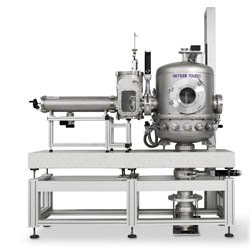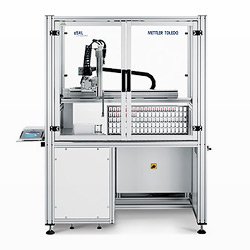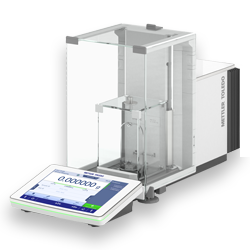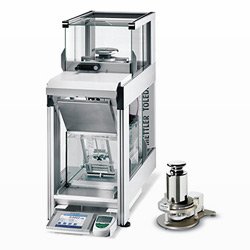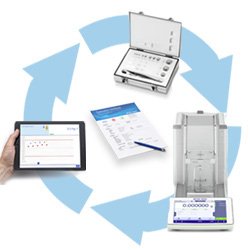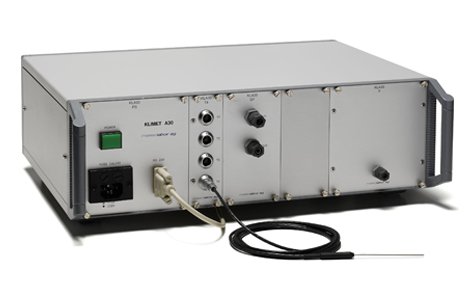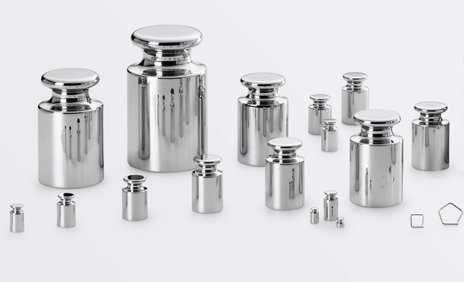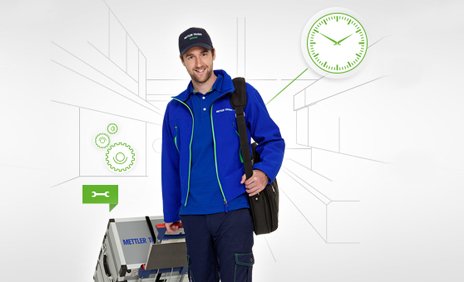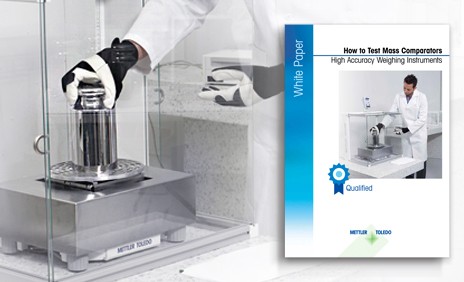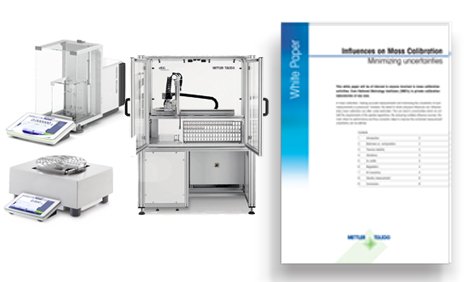
Mass Comparators
Mass Calibration from 0.1 µg up to 6,000 kg
A mass comparator is a balance that offers high resolution and exceptional repeatability, enabling it to be used to determine the smallest differences in mass. Mass comparators are perfect for calibrating and verifying masses and weights in mass metrology. Mass comparators are also ideal for any weighing application that requires highly accurate results.
FAQs
What is the difference between mass and weight?
Mass is a physical quantity that is a measure of the amount of material an object consists of. The mass of an object is the same, no matter where in the universe the measurement is taken. Weight describes the 'heaviness' of an object and is dependent upon the gravitational force exerted upon it. As the gravitional force varies between different locations in the world, and also by altitude in the same place, balances and scales must be adjusted at their point of use. Weight = mass x gravity. As an example, an object weighed on the moon will register only one sixth of its weight on earth. However, the mass of the object is constant.
What is a mass comparator?
A mass comparator, or mass comparator balance, is a gravimetrical measuring instrument with high resolution and exceptional repeatability, enabling the smallest difference in mass to be accurately determined. Window-range mass comparators offer high resolution weighing in a 'window' around a defined weight value and are used purely for mass calibration and mass determination for masses within this window. However, full-range mass comparators are highly versatile and can be used not only for weight determination but also for general weighing applications, particularly those in which there are small samples and large tare loads or when large and small sample qualities need to be combined in one weighing process. Your local METTLER TOLEDO representative can provide you with a free GWP® Recommendation to identify which mass comparator best suits your individual needs.
What is the difference between weighing and mass comparison?
In a regular weighing process, the balance is calibrated and the weight result of any item placed on the balance is measured from zero g. This process is called "absolute weighing". Mass comparison, which is used for weight calibration, is a specific type of differential weighing in which the reference point is not the calibrated balance but is the reference weight against which the test weight is compared. Hence why this type of balance is known as a mass comparator. When calibrating a test weight, the reference weight to which it is compared must be at least one accuracy class higher than the test weight. However, the reference weight must also be calibrated against another weight in an even higher accuracy class. This chain of comparisons provides metrological traceability to the definition of the kilogram based on Planck's constant.
What can I use a mass comparator for?
The primary application where mass comparators are used is in mass calibration. For lower class weights, in particular classes M1 to M3, F1 and F2, manual mass comparators provide results of sufficient accuracy. For class E1 or E2 weights, robotic or automated mass comparators are recommended as the measurement uncertainty is significantly lower. This is mainly due to the absence of the operator's influence. In National Metrology Institutes (NMIs), which strive continuously for measurements with the smallest uncertainty, vacuum or constant pressure mass comparators are utilized as these enable measurements to be performed under constant conditions. Influences such as geographic altitude, air buoyancy and weather conditions can be eliminated. National Metrology Institutes and metrology research centers use mass comparators for scientific research to measure very small changes in mass or force.
In addition to metrological applications, mass comparators can be used in any industry where the performance of a regular balance does not meet the accuracy requirements of the customer or application. For these applications, mass comparators are referred to as higher performance balances. Some typical industrial applications are:
- Formulation: when the tolerance levels are low and weighing would breach the safe weighing range of a standard balance
- Differential Weighing: when the difference in mass is very small and a regular balance cannot provide trustworthy results (the level of uncertainty is too high compared to the mass difference being measured).
- Gas Filling: heavy gas cylinders are filled with a relatively small mass of gas.
- Scuffing: to test lubricants, gears are analyzed for abrasion after running the engine for a given period of time.
- Force Measurements: when an applied force is compensated for by the weighing cell.
What is the difference between a mass comparator and a balance?
A mass comparator and an balance have the same design and work according to the same principles. The difference between a mass comparator and a balance is the performance, in particular the readability and repeatability.
For 1 kg capacity, this table illustrates the differences in readability and repeatability:
Regular laboratory balances are specified by the main performance properties: repeatability (RP), eccentricity (EC), nonlinearity (NL) and sensitivity (SE). However, as weight calibration is carried out by differential weighing, mass comparators are additionally specified with differential weighing repeatability ABA (RP ABA).
Do I need to calibrate my mass comparator?
According to regulations, a mass comparator used solely for weight calibration does not need to be calibrated. This is because the test weight is compared to a reference weight; the reference weight is calibrated and ensures traceability to the BIPM and the definition of the kilogram. However, to protect your investment and ensure continuous high measurement performance, METTLER TOLEDO recommends performing preventive maintenance on a routine basis.
Where mass comparators are used in other applications, it is crucial to apply the same quality standards to your XPR-C mass comparator balance as you would with any other analytical or precision balance.
What are the advantages of a mass calibration software?
A dedicated mass calibration software helps to reduce errors in the mass lab due to the guided workflow and timing options. All results and measurements are automatically transferred from the mass comparator to the software, ensuring full traceability. In addition, the customer-, weight- and document management possibilities reduce time spent on data management and increase the throughput of the calibration laboratory. Mettler Toledo offers all the mentioned benefits with its weight calibration software MC Link 2.
